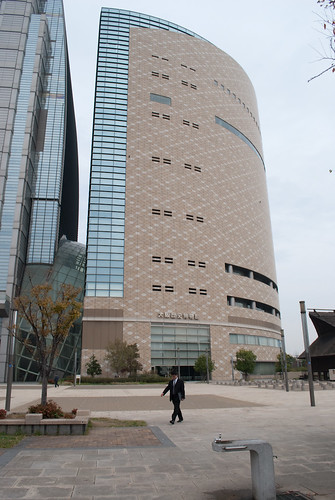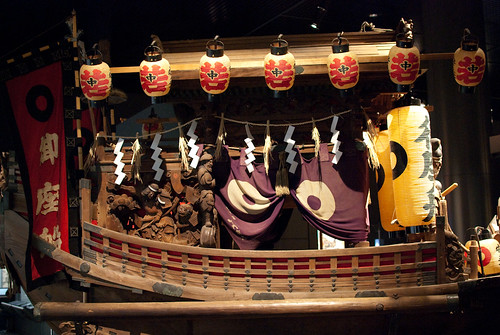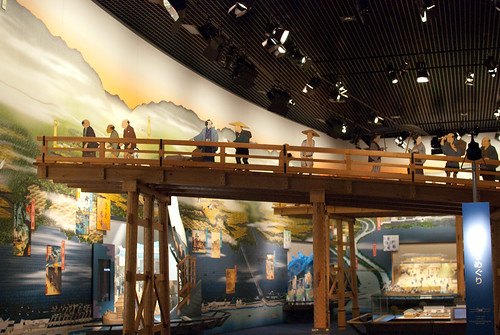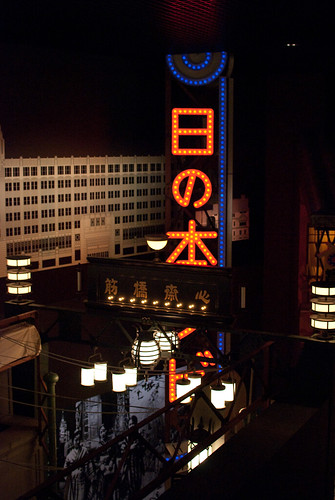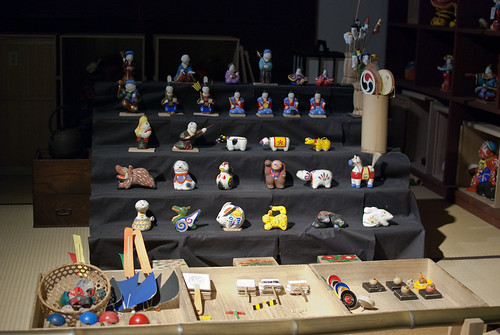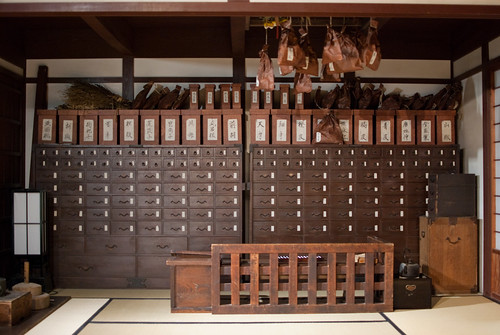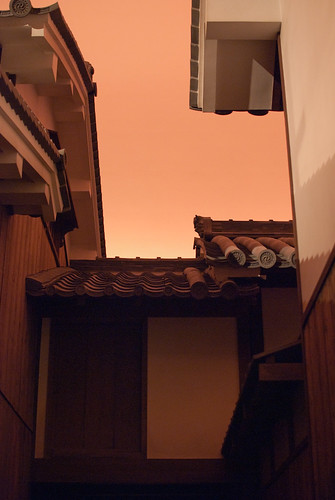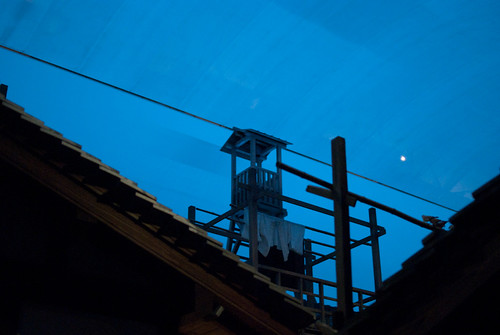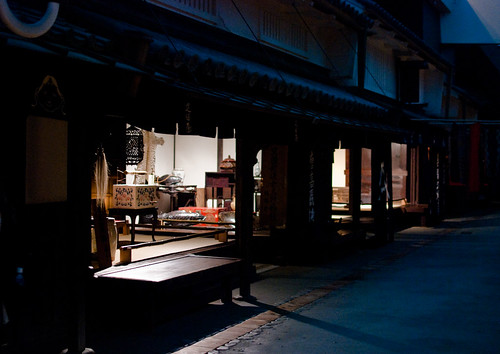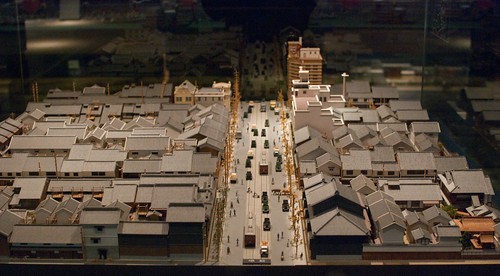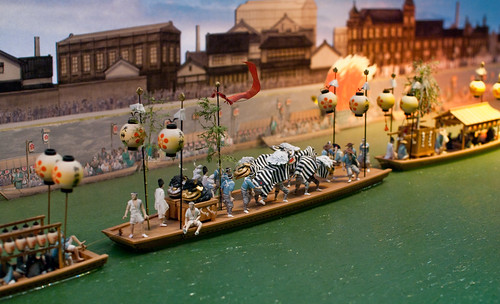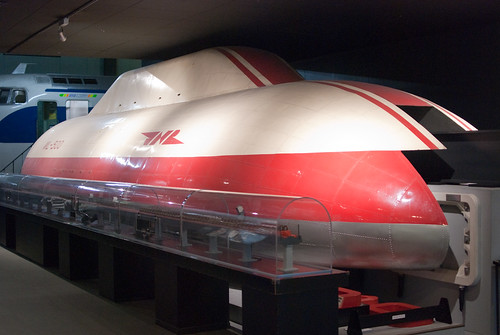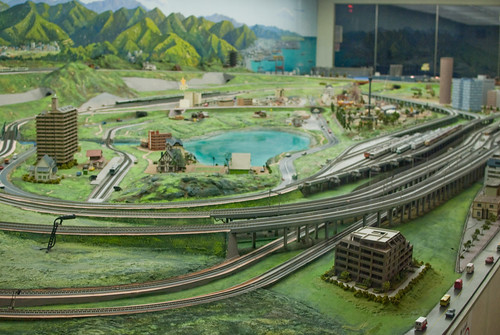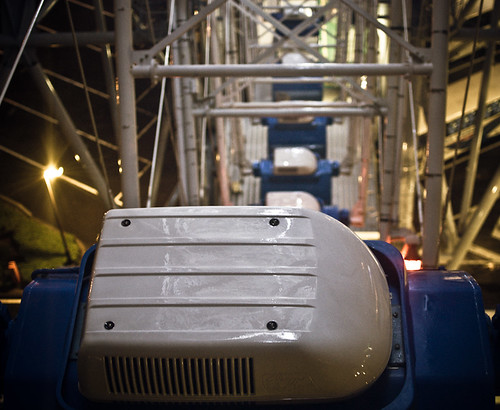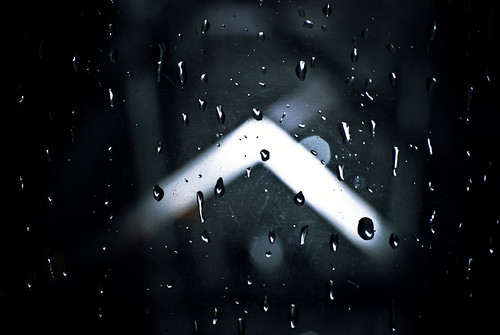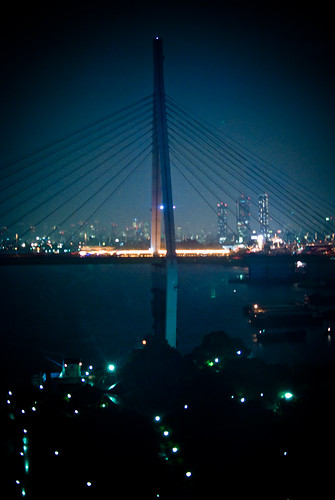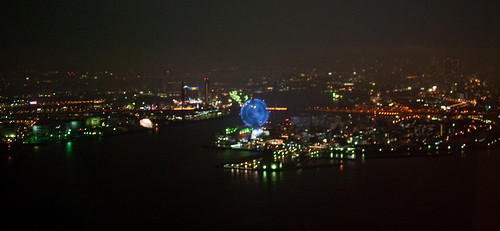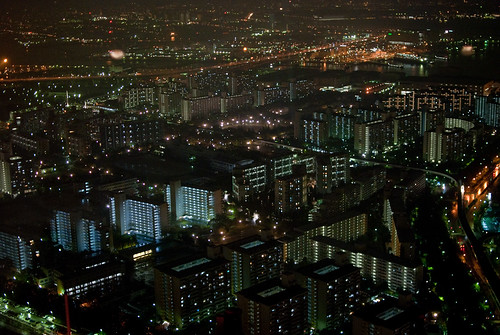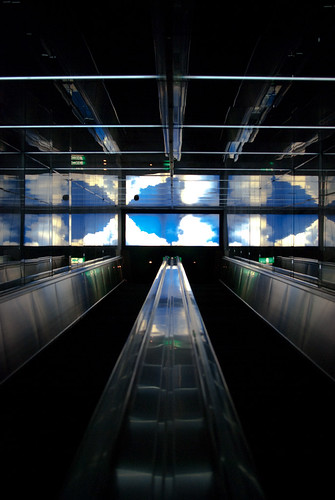Pressing onward on our day of museums tour, we went back to the Osaka Castle area to the Osaka Museum of History. We had passed by it on the previous day, but it did not fit well on our itinerary. So here we were again. The museum actually shares a common atrium with the local Osaka branch of NHK television. So there were all these TV posters on one side of the atrium, then the more academic posters of the museum on the other.
As is the trend in a few of the attractions we've visited in Japan, the suggested route in the museum takes you straight to the top floor and then you snake your way down through the exhibits. One of the first signs H looked for was a no photography sign. Apparently it was fine to take photos in most of the exhibits unless there were true artifacts involved, which would be sensitive to light.
One of the first things we did in the museum was to, well, sit down. We had been rushing around a lot this day and our feet were pretty tired. But we also had something to watch as we sat down. It was a large screening room with a short video on the history of Osaka and the surrounding region. It was a good summary to familiarize us with the exhibits ahead.
Also stamp mania was well and alive in the museum. Each floor had a collection of rubber ink stamps to go to and collect the stampings onto a sheet of a paper. It must be a great way to get some kids engaged in the museum itself.
The tenth floor on which we started housed the Naniwa Period (ca. 7th Century) exhibit. There was a partial reconstruction of the Naniwa Palace that once stood literally across from the present-day Osaka Castle and kitty corner to the museum. The ruins are actually visible when you look out the window from the escalator atrium. There were life-size models of the entire royal court of the time. You could walk right through and explore this re-creation. A map in the exhibit showed the footprint of the original palace grounds were now mostly covered by modern buildings.
On the ninth floor was an exhibit about the middle ages and early modern history of Osaka. It's sub heading is 'tour the water city'. Even more so then, maps of the Osaka region reveals how many more rivers were prominent in the region's landscape. Some places where there were rivers before have almost literally disappeared. That explains why some place names with the character boat in their name are nowhere close to water in present day Osaka. There were lots of maps that tickled H's fancy and giant walkthrough exhibits to showcase what life in Osaka was like.
On the eighth floor, we were greeted by the Archaeology Exhibit. This floor was more for kids you could get hands on and try their hand at being Indiana Jones without the Nazis trying to kill you. There wasn't much of interest to us, so we went down to the next floor almost immediately.
On the seventh floor, was the early modern and contemporary exhibit. There is an entire scene recreated from Osaka before WWII when life was buzzing and the city was starting to modernize. It was a night scene complete with streetside vegetable vendors, giant neon signs, and a local shrine lit up to the nines.
The remaining floors in between were all lecture halls and meant for school field trips to use when they visit. So we bypassed all those and went straight down to the statutory gift shop.
Again, Japan has impressed us with their professional museums complete with giant reconstructions or detailed diorama miniatures. For ¥600 (roughly $7 CAD), museums in Japan have been a good bang for your buck. At a much less impressive local museum like the Museum of Vancouver, you'd be paying $12. However, if you decide to use the Osaka Unlimited Pass on the same day as your visit to the Osaka Museum of History, then admission is free. What a bargain!
Sapporo Cityscape
3 years ago
